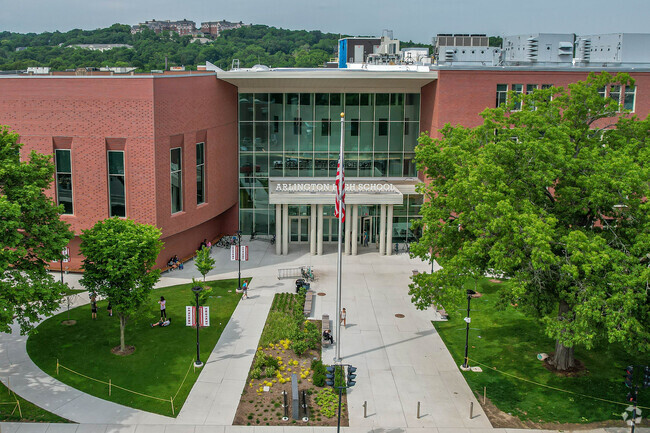Teachers Are Not Malfunctioning, and We Don’t Need Robots That Will
January 6, 2021
In this new age of continuously evolving technology, we are able to create solutions for problems, and make our life easier. The use of artificial intelligence is present in varying places; from vehicles, to smart phones, to life in the home (e.g. the Google Nest Hub). Should the success of artificial intelligence be formatted and brought to classrooms to replace teachers in the future? Since the action of using technology to inquire and learn is so popular, is it a method that will enhance the educational interest of students? Or is it missing the important element of humanity and relatability?
I argue that teachers should maintain their position and that they should not be replaced by artificial intelligence. One reason is the decrease in job opportunities and a source of income. According to the Bureau of Labor Statistics, the 2019 median pay for high school teachers was $61,660. There were over one million jobs for the position of a high school teacher and there is an estimated employment change (over the next 10 years) of +40,200. Replacing teachers with artificial intelligence would cut employment opportunities for teachers and teaching assistants. The change in demand would likely have an impact on student interests and what classes are offered in college. In 2019, Time wrote an article discussing a robot that is made to improve the emotional welfare and organization in a senior living home. The robot, that does not resemble human anatomy (e.g. no functioning hands) costs $22,000 to make. Although the production cost of this robot is less than a teacher’s salary, it likely cannot yet carry out all tasks that are required of a teacher. If society had AI teachers, it would drastically change the job market. There would be a higher demand for people interested in technological professions, so one’s ideas for their future may have to change to accommodate the new market.
Along with educating students, a teacher’s job is to listen and do what they can to improve students’ wellbeing. Will that part of the teaching career take less precedence because of the difference in mental anatomy between humans and AI? I have to question if students will be able to form a strong connection with AI teachers. If students are not being taught by a human who can empathize with them, it is possible there would be a decrease in their feelings of safety and security. Can a student really confide in a robot? The robot used in senior homes was able to respond to others and share emotions, but it is clearly more automated than a human’s responses would be. The current pandemic has emphasised the need for socializing. Decreasing the number of people available to socialize is not in the best interest of a student. Variety is another important aspect in people’s lives and so is personality. Every person is unique and they have different qualities and characteristics. Having different teachers is important because it allows students to acclimate to different environments and prepare for the ever-changing future where things may not go their way. A student is not being challenged if every AI teacher they encounter presents the same teaching approach and has the same attitude.
LiveTiles, a software company that supplies technological tools to businesses globally, argues that AI teaching is beneficial because there is software that would allow a ‘teacher’ to grade essays, direct attention to criteria that the majority of students are struggling with and “…bridge the language gap for many second language students.” These are all helpful aspects of AI, but that doesn’t mean live teachers should be replaced. Teachers could use these advancements in the classroom as an aid, but these qualities of AI are not enough to get rid of human educators. LiveTiles, a provider of software for businesses, discusses the pros of “[d]ynamic [s]cheduling and [p]redictive [a]nalysis,” which means AI can analyze a student’s habits and create a schedule that will be most beneficial for them. Dynamic scheduling and predictive analysis is another tool that can be used by teachers, but it is also decreasing the skills of planning, communicating, adapting and managing time. Another pro of AI teachers is that they are available all the time while humans have to take breaks and cannot always be reached. The specific auto-response technology found in AI is an advantage that should be used, but not all the time. It could be used by a teacher, but like the other advancements, it is not enough to take the place of a teacher. Although AI would eliminate struggles in teaching certain students or conflicts between a teacher and a child, it is important for individuals to be able to find ways to work together. Although AI would not have behavioral struggles with a child, issues such as communication, socialization or following rules are not brought to attention like they are when a human teacher is present. Without teachers to pay, taxes may decrease, but it is likely there would be other things that maintain (or increase) the original amount paid for taxes. Money will be needed to manage AI and to ensure the environment is suitable for the artificial intelligence teachers.
Over time, society is being introduced to new ways technology can help us, but with the technological aid, we are reminded we need to hold onto humanity. We aren’t benefiting humankind by eliminating career paths and altering aspects of socialization and security. Instead, society is being damaged by it.
All views expressed in this article belong to the journalist and do not necessarily reflect the views of the Ottoson Insider.










zahra • Jul 25, 2021 at 8:18 pm
I thought this article would talk about robots malfunctioning, but it doesn’t. I need it for my speech and I’m not too happy although I agree with the above argument. Next time, can you include what you say will be in this text.
JC • Jan 16, 2021 at 12:33 pm
What an amazingly thoughtful and well-researched article. In addition to the excellent writing, I appreciate the timeliness of this topic. Covid-19 has reminded all of us of the limits of technology, and renewed our awareness of the benefits of human interaction for mental health and community-building. Tech has its place in any learning environment, but we must be careful not to rely upon it excessively or overstate what it can do for us. Bravo for providing much needed food for thought.
Shawn Szturma • Jan 16, 2021 at 10:55 am
Really enjoyed this article. Very thoughtful and nicely researched. I do agree that AI, focused on enabling teachers to be more productive, is well worth investing in. But replacing them, absolutely not. Robots don’t inspire, empathize, or improvise—all hallmarks of great teachers.
Sheryl Mayo • Jan 14, 2021 at 3:06 am
A thoughtful well written article. Very clear in thoughts and reasoning. I would agree that it would not be in any school district’s benefit to replace teachers with robots, but maybe replacing some would save the districts a lot of money in health insurance and benefits not sure that this is the right or wrong action to take but just a thought.